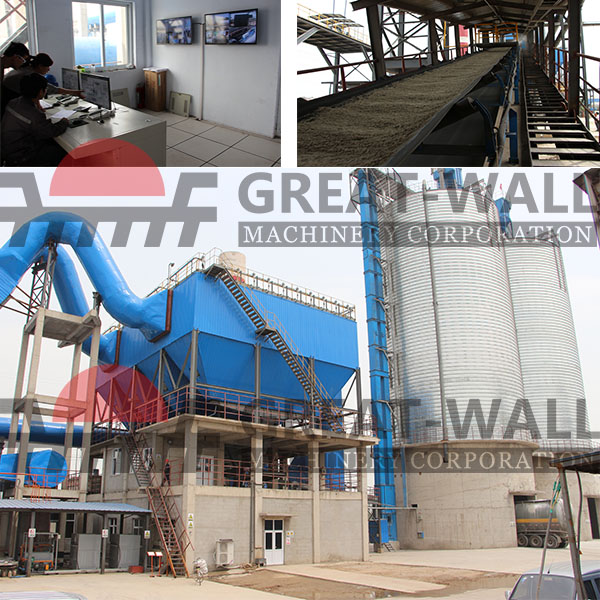
the annual output of 600,000 tons of GGBFS production line, which signed with the Great Wall Machinery, This project is beneficial to ecological environment protection It not only gains good economic benefit, but also gets good social benefit
A magnetic separator creates strong magnetic attractions with ferrous materials. It is commonly used to remove unwanted iron contaminants from cement mixtures as they are conveyed on a belt conveyor to the crusher and grinding mill. Separating iron from mixtures avoids the risk of long, big iron parts tearing open the conveyor belt, ensures the proper functioning of the crusher and grinder, and improves the grade of raw material. In addition, recovering ferrous metals from raw materials also comes with financial benefits.
Our permanent magnet separator for pipeline is an automatic high-performing magnetic separation device. It is often utilized in cement, electricity, ceramics, bricks and tiles, chemical engineering, food, glass, metallurgy, and steel industries, as a separator of choice when it comes to purifying materials and ensuring the operational safety of the downstream equipment on the production line.
Air-borne powder enters the rotary separator at its bottom, where guide vanes force the air to change from an upward flow to a tangential flow. The separator rotor tends to rotate along with the air flow without causing any drag to the stream. Hence, a centrifugal zone is formed between the guide vanes and separator vanes, where powder is separated from air.
During separation, larger particles are thrown outward by rotary force of the separator rotor, falling to the bottom of separator due to the force of gravity. After exiting the centrifugal zone, these oversize particles are collected in a conical hopper and returned to the roller mill for further grinding. Finer particles are brought through the center of the separator chamber and out the top, where they are collected by a dust collector.
The central control system is a critical part of the production line. It is comprised of the Distributed Control System, and the Closed-Circuit Television which contains 6 monitor circuits.
In a distributed control system, or DCS for short, there are a number of computers, each controlling a separate circuit. Information from each computer can be collected together and obtained by the central controller, which facilitates centralized management and control. Compared with the computer controlled multilevel system, DCS has the advantages of optimized, flexible layout, low cost, high reliability, maximum accessibility, great flexibility, easy maintenance, good compatibility, and comprehensive functionalities.
The closed-circuit television, or CCTV, records images of different production sites, stores them in a hard drive, and sends real-time information to the control center. Authorized staff can view the present state of each production site. In case of emergency, they are able to send men to the site. This prevents potential severe accidents from occurring. Typical functions of CCTV include the following.
Multiple monitor circuits
Video recording
Video search
Video replay
Pan control
Camera lens control
The completion of this project achieves cyclic utilization of industrial waste residue, particularly, reduces CO2 emissions in producing the same amount of cement, and meets industrial policy of energy saving and emission reduction in the national low-carbon economy and circular economy. 
The project effectively reduces the power consumption by 20-50% in the process of production, assures that the whole system power consumption is less than 40 KWH/t.
At the same time, the fineness of GGBFS is 4200 ~ 5000 g/cm2. Thus, it can reasonably control the fineness of slag and cement and suitable proportion of slag and cement.
That is to say, qualified GGBFS is good for making high quality cement products, and brings more profits for the company.
First, slag GGBFS plant discharged from their own steel plant can be effectively reprocessed, which can alleviate the environmental pollution. Meantime, the slag after grinding can be used for cement production, which reduces cost.
Second, the hot air stove of this GGBFS production line makes use of blast furnace gas that steel plant emission in the process of iron-making. The blast furnace slag has strong toxicity and low calorific value. It usually discharges into the air. However, the use of blast furnace gas in this GGBFS production line recycles the waste gas and alleviates the environmental pollution.